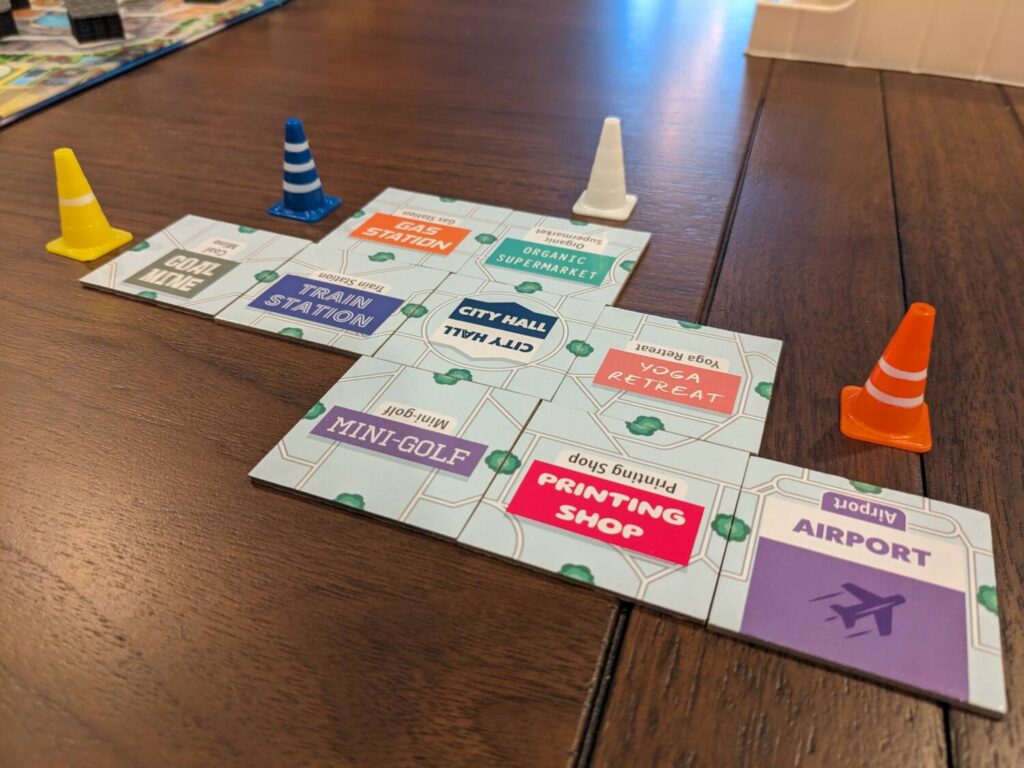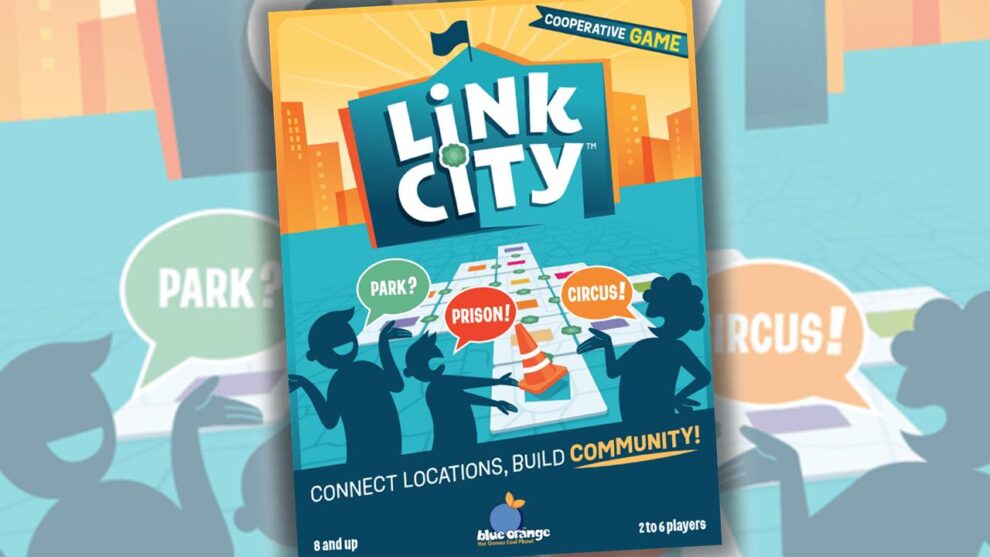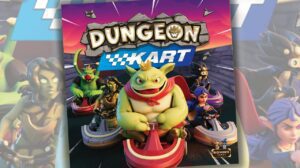Disclosure: Meeple Mountain received a free copy of this product in exchange for an honest, unbiased review. This review is not intended to be an endorsement.
The fine people at Blue Orange Games have done the Bell family well.
Kingdomino Origins? Check. The Next Station games? Check (London), then check-check (Paris). Paco’s Party might be the best game I’ve played from Blue Orange, and it’s a game that my now-10-year-old child still likes to revisit from time to time because they keep crushing everyone else in the house.
Link City is one of Blue Orange’s newest creations, and while it’s no Paco’s Party, my eight-year-old son and I enjoyed it. After a few rounds with just the two of us, there are certain things we agree on: Link City is best at two players, as a mind meld game to ensure we are in lockstep with our weird tastes in building new cities, and Link City makes for a fun creation on our table when the game’s six rounds are over.
That’s because I can watch him build out his own version of Link City while I cook dinner, turning the game into a fun table toy.

Dig in the Pile
Link City is a tile-laying, cooperative party game for 2-6 players that takes about 20 minutes. Players work together to build a city out of very simple double-sided tiles that show the name of super-generic locations: School, Prison, Outlet Mall, Circus, Library, etc. One player serves as the Mayor, and uses a screen to hide three city tiles drawn randomly from a pool of maybe 50 or 60 tiles.
The player to the left of the Mayor—in our games, that’s always the other person—is the Deputy Mayor. That person’s job is to place three traffic cones (blue, orange, yellow) adjacent to points on the ever-growing tile map of your city where the next tiles will be added. Placing a cone next to just one tile might make it easier for the Mayor during the next step, but the point yield is also lower at the end of the game. Putting a cone next to 2-3 tiles might make it harder, but the points bonanza is significantly higher.
The Mayor now looks at the map, inclusive of all previously-placed tiles and the three traffic cones. Based on the tiles the Mayor has behind their screen along with the spots with traffic cones, Link City becomes a guessing game that doubles as a mind meld: what building tile makes the most sense to put next to, say, a Swimming Pool? Or, let’s see…the orange cone is next to a Subway Station and a Bookstore. Which of my three tiles makes the most sense to place between those two locations?
When the Mayor reveals the tiles behind their screen, the Deputy Mayor—using the help of other non-Mayor players, if applicable—places their traffic cone bets next to each of the Mayor’s tiles, then the Mayor does the big reveal. For each tile that aligns the Mayor’s original plans with the Deputy Mayor’s guesses, that tile goes into the spot where the traffic cone was. If the players get a perfect score in a round, they unlock a fourth traffic cone that can be used for future rounds. And every time there’s a perfect round, players get to add a free city tile to the map, which will grant the players more points when play wraps up after the sixth and final round.

Father-Son Date Night? Good Times
Link City plays up to six players, but every time I considered showing this one to a larger group, I shelved the idea. The Deputy Mayor can work alone or with up to four other players, and I could never figure out a reason why I would try Link City at higher counts. It just felt like a game that would not benefit from having more voices in the room.
But for a date night with my kid? Link City was interesting. It was never thrilling, to the point where I had to convince my son to play even a third round the first time we played it. The second time, he was interested in a longer run, but we still only got to a fifth round. He never seemed to love it, but he was occasionally intrigued by the idea of considering what kind of building would go between a Mermaid Pond and a Local Newspaper. (The answer in one of our games was Dive Bar. “Daddy, what’s a Dive Bar?” he asked. We left that conversation for another day.)
Link City does the job as a production, but just barely. Scoring is easy thanks to a mechanic that requires counting the number of completed trees your tiles show when play ends. I wish the orange and yellow cones were a bit more distinctive. The bonus tiles are double-sided but don’t add much visual flair to the city when it’s done. The city is very much meh when the game wraps up, unlike something such as Cities, which is a color-vibrant and 3D-distinct product by the end of play.
I’m not sure I’ll be coming back to Link City, but I enjoyed my time there. As a two-player co-op, it provided a breezy time at the table with my son.












Add Comment